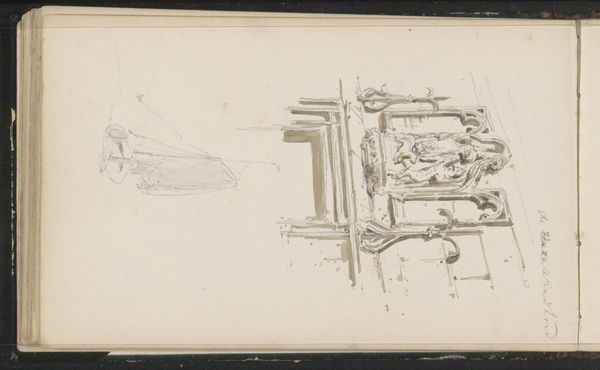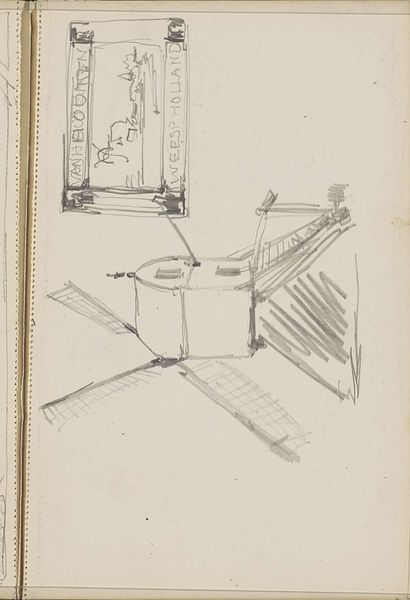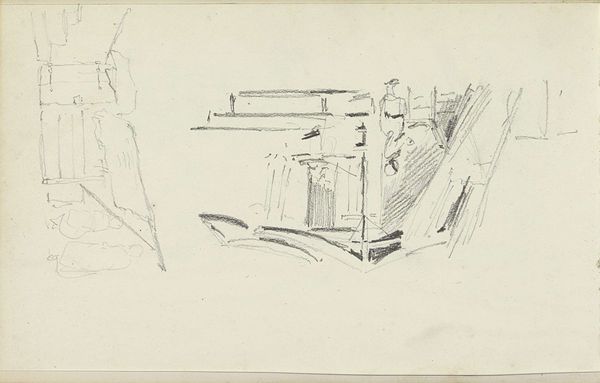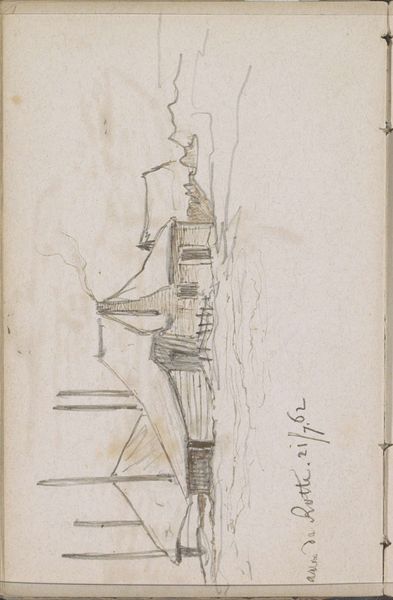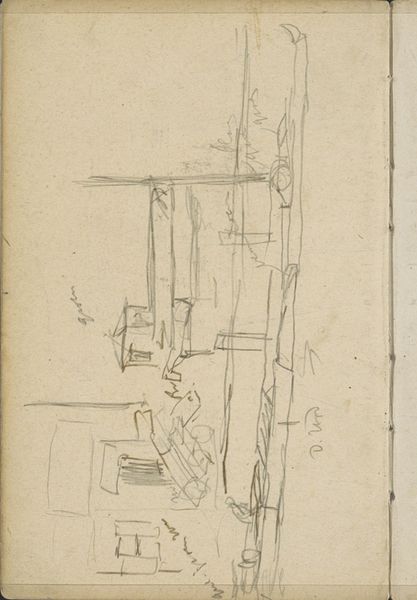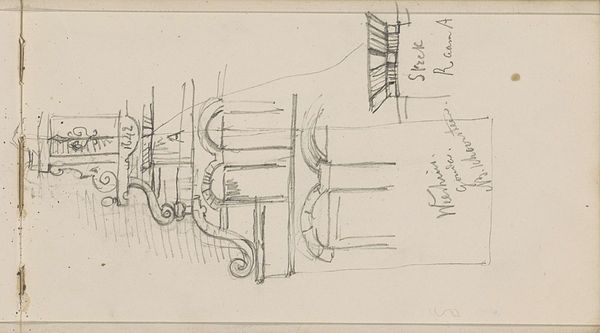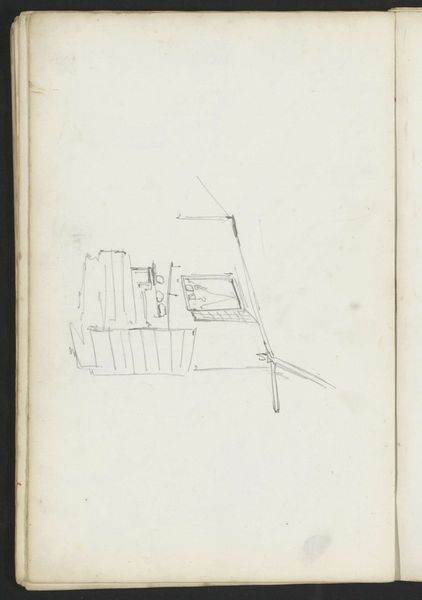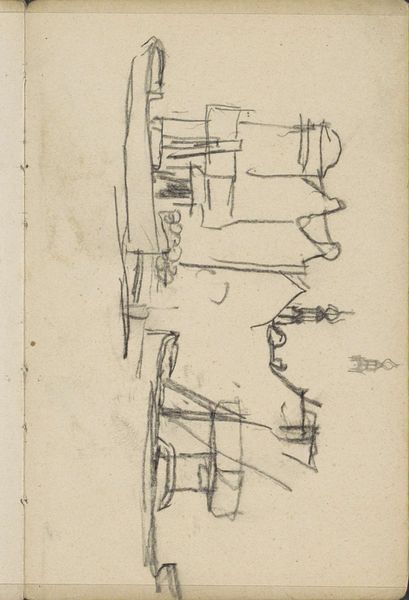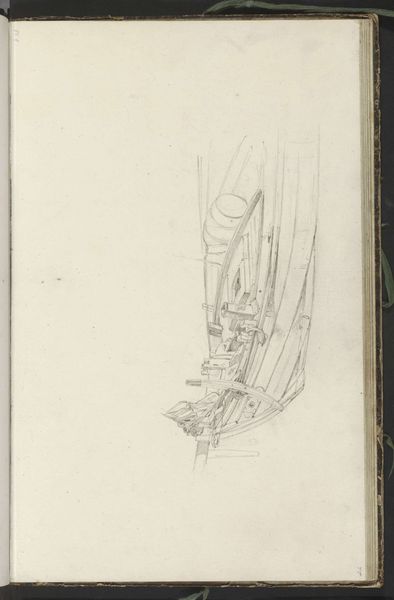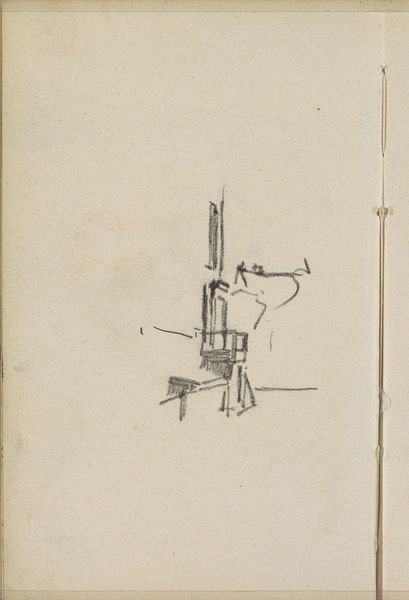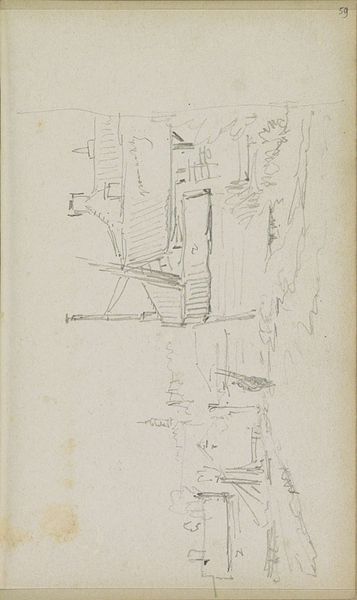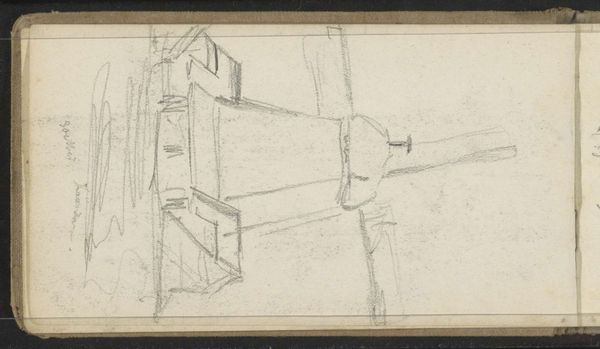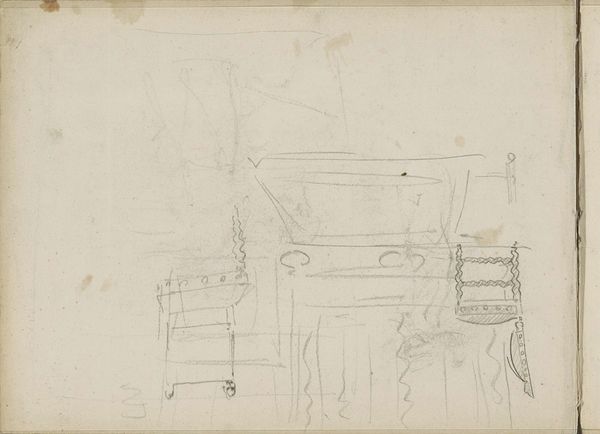
Copyright: Rijks Museum: Open Domain
Curator: Welcome. Here we have a pencil drawing entitled "Korenmolen De Haas in Den Haag," by Johan Hendrik Weissenbruch. Its creation date ranges between 1834 and 1903. Editor: Immediately, I’m struck by how simple and ephemeral it feels, like a fleeting moment captured. There’s a dreamlike quality in the windmill rendered as tentative strokes. Curator: Precisely. Note the structure of the drawing, its basic lines forming the quintessential form of the windmill. Weissenbruch really concentrates on a reduced depiction to reveal his attention to elementary forms. Editor: This drawing appears more like a sketch, a visual note within a larger commentary about labor. Windmills and farming represent an agrarian past—but there’s something unsettling in how incomplete this seems. What stories were silenced so that this symbol of progress, labor and landscape may prevail? Curator: Interesting perspective. But isn’t the true achievement in how he articulates space? Consider the negative space around the object; it nearly dissolves into the page, creating an abstract configuration that emphasizes the relationship between form and nothingness. Editor: The loose realism allows viewers to reflect upon windmills as signs within a political landscape, suggesting a tension between rapid urbanization and a slower pastoral ideal that may not serve all residents equally. We have to be cautious with these symbols, asking, who and what do they represent? What historical narrative dominates, and at whose expense? Curator: Such interpretations are plausible; nonetheless, the composition displays a clear adherence to certain aesthetic conventions regarding visual language, line, depth, and proportion. It reflects formal qualities and is meant to also stand as an aesthetic object. Editor: Undoubtedly, there is a structured artistic technique on display. But the very presence of the work as a museum piece implies questions beyond the artistic. Where do works like these intersect with society? Curator: A valuable question. I trust we have given our audience abundant food for thought on how they might engage with it from here. Editor: Indeed. There is space enough within for any mind that is receptive and seeks meaning.
Comments
No comments
Be the first to comment and join the conversation on the ultimate creative platform.
